We sat down with W.J. McKay of Goth Mountain Films, the director and producer of the documentary film Chateau Liberte’ now in production. As a rebellious teenager, McKay spent time at the Chateau Liberte' in the late 1970's. He has spent the last decade collecting images, music and stories about the people, who lived there, worked there, played there, were born there and even died there. McKay interviewed dozens of "Chateau Rats" as they often referred to themselves and they share their candid and scandalous stories with the viewers. Tales of LSD induced madness and violence fueled by alcohol and speed are told by those who witnessed the events, and musicians share their memories of what it was like to play "The Chateau."
Can you give us a brief history of the Chateau Liberte'?
The 72 deeply forested acres high up on the eastern slope of the dark misty Santa Cruz Mountains have been attracting adventurers, artists and outlaws for well over 150 years. The large rustic lodge that would come to be known a century later as the Chateau Liberte' was first built in 1865. Several cabins were added to the property and for the next forty years it would serve as the stagecoach stop between Santa Cruz and San Jose, California. In the early 1900's, it would be known by many names, as a bordello, a speakeasy during Prohibition and resorts. It was called The Anchorage from about 1899 to 1919. It was a fine French restaurant in the 1920’s called the Chateau Boussy, and it was also known as the Redwood Chateau, Chateau Regis and then finally the Chateau Liberte’.
In the 1960’s, it was a cowboy bar and only the locals in the mountains who had horses would go up there. By then, a guy bought the place that had friends in the Hells Angels, and the Hells Angels ran the place from the 1960’s through the 1970’s. It was named the Chateau Liberte' in 1971. It was known as a hangout for the Hells Angels motorcycle club, a hippie commune and a place to see some of the best rock bands in America. The Doobie Brothers started their successful career there. Janis Joplin wanted to buy the place. Members of San Francisco bands like the Grateful Dead, Jefferson Airplane, Moby Grape, and many more performed on the Chateau Liberte's old warped wooden stage.
In the 1970’s, the Chateau Liberte', which means "House of Freedom" in French, was the home to many hippies, who were trying to hang on to their "sixties values" of peace, love and dope. The local police pretended the place didn't exist because they were actually afraid to go there. At the Chateau Liberte', the bikers were the police. The bar served alcohol to minors, marijuana was smoked openly and people's various addictions, perversions and tendencies to violence were accepted without judgement.
The free and open culture at the Chateau Liberte' made it the perfect home for unusual and even outrageous characters like rock star Skip Spence, whose turbulent career and life is profiled in the film. Captain Whizzo, whose psychedelic liquid light shows would eventually be known to people all over the world, were developed at the Chateau Liberte'.
But to so many who knew the Chateau Liberte', it is the music that is central in their memories. It was a place where the "San Francisco Sound" of the sixties evolved and split into many new music genres with influences of rhythm and blues, country and jazz. Bands often spent time at the Chateau Liberte' developing ideas for future albums, arranging and rehearsing. Cross-pollinations of bands and experimental collaborations were common, live albums were recorded there, and huge outdoor concerts were held beneath the towering redwood trees of the Santa Cruz Mountains. Fortunately, some examples of these things were caught on camera and/or on tape and are featured in this film.
It started to get dilapidated about a century ago. The 1989 earthquake almost brought it down to the ground. Then in the 1990’s, George Rabe restored it and made it his residence. He still has parties there with live bands and people swim in the famous pool with the Zig Zag man still at the bottom.
People are impressed when I say that the Chateau was built in 1865 because there was nothing around anywhere that was that old. First of all, everything came down in the 1906 earthquake, so anything that would have been around the Bay Area would have come down. There are few places that are older than 1910.
I left out a bunch of stuff too, like after Wells Fargo abandoned the place, it became a place for outlaws to hide out.
What inspired you to do this documentary?
I hung out there in the late 1970’s and realized how special this place was. It was a story that had not yet been told and it was a story that I knew needed to be told. The film documents the entire story of this infamous place from beginning to present day, but the focus is on this period of American cultural transition from the sixties to the seventies. The Summer of Love was over. Clashing cultures co-existed at a spot in the forest where alcohol, sex and drugs had always been central to the lifestyle. This film offers the deepest insights into the period where rock and roll was added into that volatile mix . . . and at any time, anything could happen.
Could there ever be another Chateau?
The Santa Cruz Mountains have always attracted creative people, and one of the reasons why the Chateau would never happen again, is that it doesn’t attract artist types anymore. It’s tech millionaires who live up there now. It was the spirit of the wild forest, the proximity to the hippie culture of San Francisco and sort of the progressive culture of Santa Cruz. Jack London gave talks at bookstores in Santa Cruz in the early 1900’s, and he spent time in that area near the Chateau, possibly at the Chateau. The cross street is called Call of the Wild. It attracted authors like Jack London and Hunter Thompson. It attracted painters, writers, artists and musicians of course. That whole area of the Santa Cruz Mountains itself attracted people that thought differently, and that’s another part of the story, that most of the people that lived or played at the Chateau were artists, even the bikers drew, doodled or painted something. They made sculptures out of metal. Everyone was sort of on a creative trip, and not just at the Chateau, but all over the Santa Cruz Mountains.
One thing that you’ll hear in all my interviews is the reasons why there could never be anything like it again. To put it in the words of Mark Brown, who was the Doobie Brothers’ guitar technician, is that a place like the Chateau could never happen again because those people could never happen again. I’ve shown pictures of the people that lived up at the Chateau to some newer residents of San Jose, and they think it’s in Norway or Sweden because everybody’s white with long hair and beards. This area changed so much in one lifetime.
Are there any paintings of the Chateau?
Yes, there’s a guy named Paul Berenson, who did a couple of paintings of the Doobie Brothers standing inside the Chateau. If you google images of the Chateau Liberte', there are some paintings of people inside the bar from the 1970’s.
Did you discover anything new while filming?
I’ve heard nothing but stories that I didn’t know, as a matter of fact, everyone had their own experience up there. Everyone was up there at different times and eras, and with the cliques of people they hung out with. I’ve communicated with hundreds of people who had experiences there, and almost all of them had different tales to tell. The general scene was the same, but their individual stories are unique including my own.
Was there anything that stuck out?
It’s hard to beat my own experiences, but yeah, stories about people dying and being buried there because they had no family. There are no markers, so we don’t even know where on the property the graves are. Stories like that were pretty compelling hearing it first hand from the old timers.
What was the heyday of the Chateau?
That is a good question because this place had multiple heydays. There was no one heyday. The people of the 60’s and 70’s will tell you that was the heyday. Of course, that’s when the Doobie Brothers played there, the Tubes played there, and the Grateful Dead hung out there. Jim Morrison visited there—although he hung out with the Hells Angels there, he never played there as far as I know. Janis Joplin wanted to buy the place. Some people might say the heyday was when it was a busy stagecoach stop. If you wanted to get from San Jose to Santa Cruz, you had to stop there to eat, sleep, and rest the horses. Some people would say that the only time it was really a legitimate place would have been 1865. That was one heyday. I believe it was a speakeasy and bordello during prohibition. You had a whorehouse selling booze during prohibition. Some people would say that was the heyday. There was never one heyday—it was always a heyday to someone for 160 years.
Was there anyone you would have loved to interview for this film?
There were many people that I would have loved to interview but couldn’t. First of all, a lot of them are dead. There are others that are so old that they couldn’t handle an interview situation. Too stressful and they’re 80 and don’t want to deal with it. I would have loved to interview a lot more of the musicians that played there, but for some, it was just another stop along the way for them. I’ve interviewed a couple of musicians who were knowledgeable about the place and they’ll be in the movie. Yes, there were a lot of people I would have loved to interview about the place including Janis Joplin. She wanted to buy the place and there was a story about how the owner hated her, the bikers didn’t like her, so it fell through. I would have loved to hear that from her though… and Jerry Garcia, he lived there. I would have loved to talk to him. Skip Spence kind of went crazy there and I would have loved to interview him. That’s another good reason to make the film now because the last ones aren’t going to be around much longer. They’re all like 15 years older than me and more. They called me “the kid” when I hung out up there. That meant you don’t beat him up. The Hells Angels left me alone. They ignored me. I wasn’t important. By the time I got up there, the place was almost crumbling to the ground. It had become more of a hippie commune than a place where the bikers gathered to have concerts.
Did you ever see anyone famous there?
I never saw a famous band there. However, I saw John Cipollina from Quick Silver Messenger Service teaching kids how to play guitar. What we would do is go up there and have impromptu jams right there in the lodge in the middle of the day during the week and we were like, “This guy in this cabin down here has a drum set, and this guy sleeping in his car is a good singer.” My friends and I would just go up there and jam…it wasn’t very good, but it was fun. All the posters I collected for the film were of shows I didn’t see.
Did you go to film school?
No, and that’s why I’m so good. I didn’t go to film school, but I had friends who were in film school and I was involved in a lot of projects and making videos. I made my first documentary on pollution when I was in grade school using a film movie camera. So, I’ve literally been involved in making films and videos my whole life, but I never once enrolled in film school.
What was the most challenging part of making this film?
It’s kind of boring, but the legal stuff, the legalities. Unless you’re a lawyer, in which I’m not, means money. You need to get the song rights. You need to get the image rights, finding the photographers, the records. I’ve unearthed recordings—live recordings and posters that no one knew existed. I’ve unearthed hundreds of photographs from many different eras. I love the production, love the interviews, and love the events. Everything about making the film is a joy, but this legal, money part of it all sucks. No fun at all.
Can you tell us about Captain Whizzo?
Captain Whizzo is the most famous character from the Chateau’s history, who wasn’t already famous from somewhere else. Sonny Barger and the Hells Angels had already been in movies. The Tubes were famous. Moby Grape was famous. Sons of Champlin were famous. Captain Whizzo was a lovable mad scientist type character, whose many artistic accomplishments are shown in the film. He was kind of a scroungy hippie dude. He had been experimenting with liquid light shows by putting oil, water and colors into trays and putting it up. This became world famous. Almost all bands by the late 1960’s were having shows like this, and I knew two or three guys in the Bay Area who made a living by doing these types of light shows. Bill Ham was another famous one. Whizzo showed up and moved into one of the cabins or the basement of the Chateau around 1970, and he started doing these liquid light shows for the bands when they would play at the Chateau. People freaked out so much that it spread around the world—this liquid light show idea of having these bubbles playing up on the screen behind the band. Totally psychedelic.
Whizzo was an eccentric character loved by all. He often had a huge beard but he was super loveable. His real name was Michael J. Elzea and I’ve become fairly close with his brother and family in Lawrence, Kansas where he came from. The thing about Whizzo was that everybody loved him. He was a big drinker and he always had a bottle with him when he would do the light show. Everybody loved the light show and bands liked to come up and play there just because Whizzo was there with his lights and two overhead projectors. When you were looking at a band at the Chateau, you were also getting a Whizzo light show. More than half the concert posters I have say: “Lights by Whizzo.” “Captain Whizzo Light Show.” He was a larger than life character. He lived there for ten years in various situations. Then he ended up going on tour with the Charlatans UK all over the world, and all these people saw this liquid light show for the first time in the 1970’s.
Then he went on to New York City and he met the guys that had High Times magazine. They started doing underground parties in New York City with Whizzo’s light show. Whizzo was already getting to be old at this point, but he was a hard drinking man and he died on April Fools Day in 1993 of alcohol related issues. Everybody that spent time at the Chateau knew Captain Whizzo and partied with him. For not being a rock star or a famous biker, he was the most famous character at the Chateau. Anyone that knows anything about the Chateau knows about Captain Whizzo. His story is the central focus of my film. Twenty minutes of it will be his artwork. His artwork is insane. He was also an illustrator. He did greeting cards in New York City and stuff. He had this incredible life. He was an amazing guy. I have a few choice pictures of him in the film. His story and meeting his family have been a joy. I even made Whizzo shirts. I have the rights to reproduction of all of his artwork. So you can get Whizzo notepads and mugs and stuff like that on Redbubble. He had left before I started hanging around. Everyone would talk about him and I felt like I missed out on the heyday of Whizzo.
How did he get that name?
He called himself that. I have a cartoon that he did for his high school newspaper and it’s signed Whizzo. It’s his alter ego. He created that name for himself in Lawrence, Kansas. He used to wear top hats. He looked like a freaky San Francisco psychedelic guy. Then he became like a full on bushman. No haircuts, no shaving, little round glasses poking out from a face full of hair. He has a famous self-portrait which is on my t-shirts and it’s a bunch of wiry hair and little round glasses.
Any other standout characters?
Skip Spence was another character there. He was known as Mr. Chateau. He was famous. Moby Grape was a big band back then. He could literally be touring the world but he didn’t like to leave the Chateau. When he was at the Chateau, everybody loved him, they called him “Skippy.” He basically lost his mind, sort of like a Syd Barrett story. Skip’s legacy lived on way past his death. He was certainly another one of the main characters up at the Chateau.
With all its history dating back to the 1800’s, do you think it’s haunted?
Well, there’s an image of a lady drawn underneath the place on the foundation, and she’s clearly drawn in the style of a woman from 1910, 1915? Big hat, lace, you know, and some people when I tell them about it, say, “Oh, yeah, that’s the one that haunts the place.” A couple of girls that I interviewed in my preview that were bartenders there said that it was full of ghosts, just full of them. There were people buried there. There was also a serial killer in Santa Cruz that no one remembers.
How do you know they didn’t hang out at the Chateau?
I don’t know…
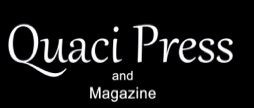
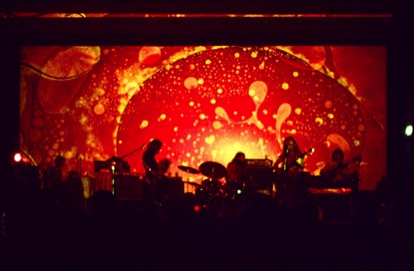
Interview with W.J. McKay on the making of the Chateau Liberté documentary
The Chateau Liberte’ was called the Anchorage in 1919.
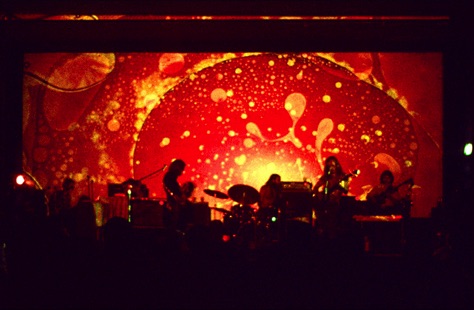
Whizzo light show with the band Timbercreek. Photo by Greg Arrufat
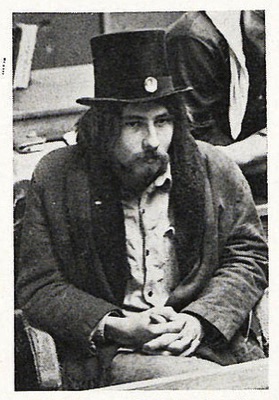
Captain Whizzo
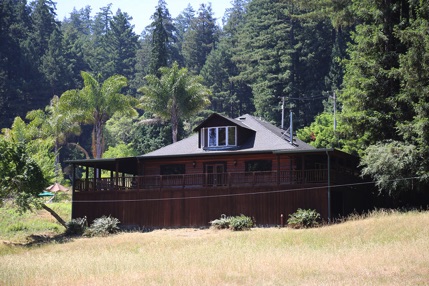
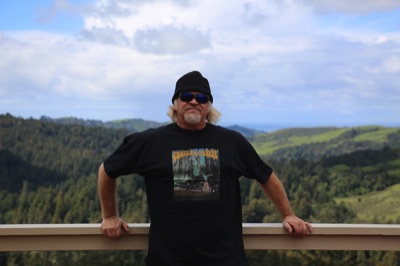
The Chateau Liberte’ today
W.J. McKay of Goth Mountain Films. Director and Producer of the documentary film, Chateau Liberte’.
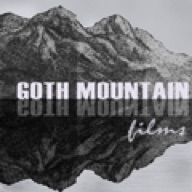
Subscribe to the Chateau Liberte’ YouTube channel.
A recent project by Goth Mountain Films is the super trippy music video for Dale Ockerman of the Doobie Brothers and Quick Silver Messenger Service.
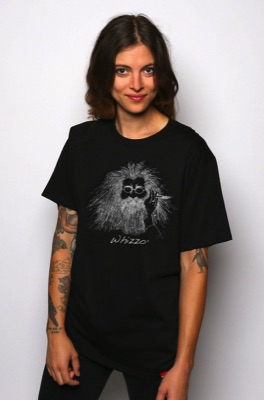
To order a Captain Whizzo shirt email:
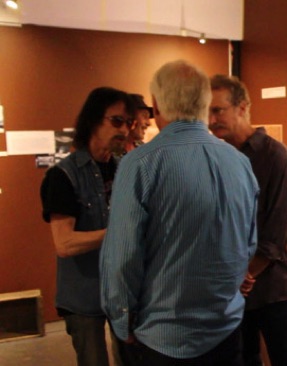
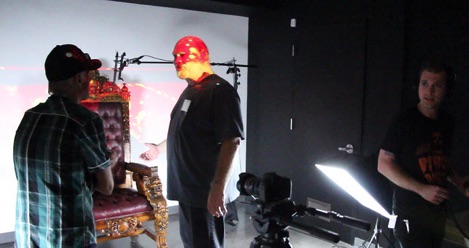
W.J. McKay doing interviews for the documentary at the Los Gatos Museum during the Chateau Liberté: House of Freedom Exhibition. (Museum photos by Ryan Zweng)
Dale Ockerman of the Doobie Brothers and Quick Silver Messenger Service and friends at the Los Gatos Museum during the Chateau Liberté: House of Freedom Exhibition.
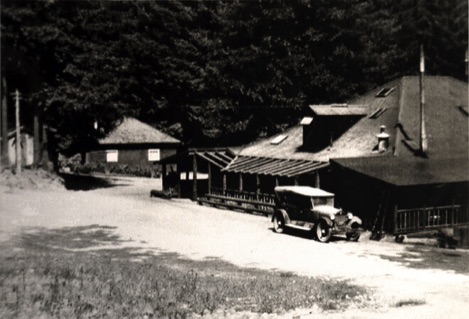
Photo by Greg Arrufat